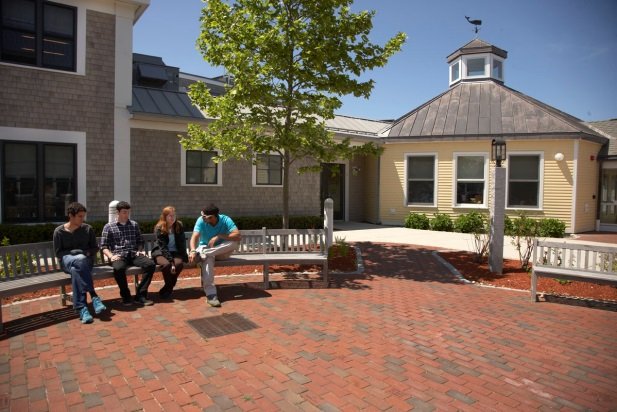

DESE Issues Guidance Instructing School Districts to Prioritize Students with Disabilities
The beginning of the new school year will mark changes in how school districts must provide services to special education students during COVID-related school closures. The Department of Elementary and Special Education’s (“DESE”) most recent guidance related to students with special needs and the COVID-19 pandemic instructs school districts to prioritize providing in-person services during the 2020-21 school year to students with disabilities – particularly preschool age students and students with significant and complex needs. The rationale behind this guidance is that these students have a more difficult time accessing remote instruction than other students. In its guidance, DESE defines “students with complex and significant needs” as: Students already identified as “high needs” through the IEP process on the IEP form entitled “Primary Disability/Level of Need-PL3.” Such students must meet at least two of these criteria: Services provided outside of the general education classroom Service providers are special education teachers and related service providers; Special education services constitute more than 75% of the student’s school day; Students who cannot engage in remote learning due to their disability-related needs; Students who primarily use aided and augmentative communication; Students who are homeless; Students in foster care or congregate care; and/or Students dually identified as English Learners. DESE emphasizes that school districts must first attempt to provide full-time in-person instruction for these students, even if the rest of the school has entered into a hybrid or remote model of instruction. In the event that this level of service is not possible, DESE stresses that school districts should provide as many in-person services to these students as possible in school on a part-time basis, and, where possible, provide the remainder of the services in-person in the home or community setting. DESE also clarifies that during the 2020-21 school year school districts must provide students with all services documented in their IEPs – whether through in-person instruction, remote instruction, or a combination of both, with a strong emphasis on providing in-person instruction to the greatest extent possible, while abiding by the current necessary health and safety requirements. Additionally, while DESE had advised school districts in the Spring of 2020 that they could satisfy the requirement to provide a free and appropriate public education (“FAPE”) during remote learning through a Resources and Supports model (i.e. sending packets and assignments home coupled with frequent communication with parents), DESE has revised its position for the 2020-2021 school year. DESE now instructs school districts that they must be prepared to provide remote learning to students with special needs through the “Instruction and Services” model (i.e. structured learning time, teletherapy and video conferencing). The “Resources and Supports” delivery model can only be used on a temporary basis for no more than two weeks upon return to school. DESE’s guidance can be found here: http://www.doe.mass.edu/sped/ If you have any questions about information contained in the guidance, or other concerns related to the provision of special education services during this pandemic, please give us a call. We, like you, are in new
Read More
COVID-19 Update: As School Closures Extend Across Massachusetts, DESE Amends Guidance to School Districts
First and foremost, we hope you are feeling healthy, safe, and cared for. This cannot be reiterated enough: these are truly unprecedented times, and this is unchartered territory. Every day the US Department of Education (USDOE) or the MA Department of Elementary and Secondary Education (DESE) is sending out new guidance for school districts during school closures. We are monitoring it carefully and are here to answer any questions you may have. As school closures extend in Massachusetts, DESE has shifted its guidance for all school districts across the state. Originally, the guidance was for schools to prioritize the most immediate health and safety concerns within their community: making sure that all students who needed it had access to food and nutrition (about half the students in the state rely on breakfast, lunch, and/or dinner at school). Once that was up and running, schools were advised to reach out to students and families and provide access to educational resources to students. From what we are hearing, our clients have been provided various educational resources by their district over the last couple of weeks. On March 25, 2020, Governor Baker extended school closures until at least May 4, 2020, and this prompted DESE to advise schools that the expectations have now increased since students will be out of school longer than the originally planned three weeks. On Thursday, DESE provided new guidance to school districts in response to this extended closure (as well as in response to updated guidance from the USDOE that was issued on March 21, 2020). DESE is now recommending that school districts move to providing remote learning opportunities for their students. Because DESE is not mandating specific ways to do this, it will look different for all schools. DESE makes it clear that this type of learning will not replace the valuable in-person instruction that happens under normal circumstances; it is not ideal for anyone— students, parents, teachers, or administrators. However, DESE is asking that everyone involved try their best given the restrictions we are all facing right now. DESE has asked that schools now shift to providing a free appropriate public education (FAPE) to students with disabilities. DESE states “The determination of how FAPE is to be provided may need to be different in this time of unprecedented national emergency.” Districts should prioritize the critical skills that students need to prevent regression. DESE is asking that parents/families be flexible because strict IEP compliance will not be possible during this time. Over the next few weeks, we expect that districts across the state will start to provide more structured learning opportunities for students, including students with disabilities and ELL students. Given this sudden shift in expectations during these unprecedented times, however, this will not happen overnight. Most districts are not prepared for this and face many hurdles to make this type of learning happen for its students. We encourage you to be patient and recognize that this is new for everyone (including your child’s teachers or service
Read MoreCOVID-19 Update: Supplemental Guidance from the U. States Department of Education
Since our blog post last week, the United States Department of Education (DOE) has published updated guidance for school districts and families nationwide relating to providing meaningful educational opportunities to all students, with and without disabilities. DOE issued this updated guidance in an effort to clarify “a serious misunderstanding” in the educational community that school districts should not provide any distance instruction during COVID-19 closures. This misunderstanding seems to stem from fear of being unable to meet the federal requirement of providing all students, with and without disabilities, with access to distance learning. Instead, DOE emphasizes that federal disability laws “should not prevent any school from offering educational programs through distance instruction.” It highlights that school districts are allowed flexibility when determining how to meet the needs of students with disabilities. While federal disability laws require equal access to offered instruction, it does not require that instruction to be provided to disabled and non-disabled students via one specific methodology. Rather, if students with disabilities are unable to access distance instruction via the methodology offered to students without disabilities, school districts may satisfy federal disability laws by providing access to instruction via alternative methodologies. Examples of alternative methodologies include teletherapy, tele-intervention, instructional packets, projects, and written assignments, to name a few. The DOE also emphasizes the importance of school districts and families working collaboratively around IDEA timelines during this unprecedented time, including but not limited to timelines for eligibility determinations, due process hearings, annual review meetings and reevaluations. If you have any questions relating to DOE’s most recent guidance or other special education issues, please reach out. Stay healthy and safe.
Read More
COVID-19 Update from Sankey Law Offices
We hope you are all staying healthy and safe. What a crazy time. We are certainly in uncharted territory right now and everyday things seem to be changing drastically. The Department of Elementary and Secondary Education (DESE) is trying hard to provide updated guidance for school districts in accordance with the requirements that are being issued locally and nationwide. Our office is monitoring everything from DESE and the US Department of Education and are happy to answer any questions you have or brainstorm with you. In short, Governor Baker ordered all Massachusetts public and private schools to close down as of March 17, 2020 until April 7, 2020. As a result, schools are currently trying to determine what, if any, learning opportunities students will receive while schools are closed. There is currently no federal or state mandate for schools to provide any education to students during this time. However, in Massachusetts, DESE is recommending that schools provide students access to educational resources. Schools are not required – and it is not recommended by DESE – that schools try to provide educational opportunities equivalent to an actual school day (for example- many colleges are providing virtual classes or switching to online classes for the rest of the school year and DESE is not recommending this at this time). This is the same for special education services, meaning schools are not required to provide a free appropriate public education or individual services to special education students while out of school (unless schools provide educational opportunities to general education students as described above). Instead, DESE wants students to continue the continuity of learning through access to educational resources. What this looks like is left for each school district to decide, so it will likely be different across the state and even different within individual districts, grades, and specific classes. If schools choose to provide access to educational resources to the general education population – which most are doing – they must also provide access to educational resources to special education students as well. Schools are also being encouraged to reach out to students in various ways to stay connected. It may be difficult to reach all students so DESE is encouraging schools to be creative and try their best. Once schools are back in session, there are some special education students who may require additional services because of this closure. Districts will need to review how the closure impacted its students and determine on an individual basis if some students require additional services as a result of this time being out of school. DESE recommends that IEP teams consider factors such as the student’s academic progress to date towards their IEP goals, the nature of the service(s) missed, the frequency of the service(s) missed, reports from providers, previous educational history, and history and concerns of substantial regression. This is not equivalent to “compensatory services” so not all students will be eligible for this. Other disruptions to note include team meetings, evaluations or reevaluations,
Read More
Special Education Decision Results in Placement at Riverview School
Sankey Law Offices recently prevailed in a hearing before the Bureau of Special Education Appeals which resulted in the placement of a 15 year old boy at Riverview School. The student, who presents with diagnoses of Autism Spectrum Disorder and an intellectual impairment, was placed in a partial inclusion program at Fairhaven High School. It was Fairhaven’s position that its program was appropriate because the student was able to access the general curriculum and was an active participant in his classes. Moreover, Fairhaven argued that the student loved to participate in band and that his removal from the community to attend a private school would deprive him of his independence and the ability to socialize with non-disabled peers. Over the course of a three-day hearing, the student’s parent was able to demonstrate that the student was unable to access grade level academics even with a dedicated paraprofessional. The parent also showed that Fairhaven had failed to provide recommended reading intervention and, most importantly, that the district ignored its obligation to embed social skills instruction throughout the student’s school day. Based in large part upon these deficiencies, the hearing officer ordered Fairhaven to fund the student’s placement at Riverview School. From our perspective, there are at least three important lessons from this case. First, the hearing officer was resolute in requiring that there be objective measures of performance to establish effective progress. The fact that the student appeared engaged and happy in general education classes was not enough to justify Fairhaven’s program. Instead, the hearing officer noted that the lack of objective measures – such as evaluations and data-driven assessments – undermined Fairhaven’s claim that the student was making effective progress. Most notably, the hearing officer rejected the notion that report cards and progress reports are sufficient to establish progress, describing them as little more than “subjective and global reports of class participation” rather than objective measures of academic progress. Second, the parent demonstrated that the student’s goals, objectives and benchmarks were largely unchanged over a three year period. The hearing officer noted, quite correctly, that the continued presentation of identical goals indicated that the student was not making progress. This is a clear reminder that, whether participating in a team meeting or reviewing an IEP, it is critical to pay attention to the goals and benchmarks in order to determine whether the student is truly progressing. Finally, as we always stress to our clients, the retention of highly qualified and articulate experts to evaluate and observe is essential to success at a hearing. In this case, the hearing officer credited and relied upon the parent’s expert to a very high degree in determining the student’s learning needs and in evaluating Fairhaven’s proposed program. We continue to believe that a case cannot be won in any hearing without highly competent and thoughtful expert testimony. The bar is always high when seeking an out-of-district placement for a student at a school district’s expense. This case illustrates the painstaking detail that is required
Read More
Using Background Information in the Hiring Process
Employment Background Credit Checks As we discussed in our last article, it is not uncommon for employers to look into the background of applicants before deciding whether or not to extend an offer of employment. In addition to conducting criminal background checks, employers may also conduct credit checks and review school records. Below we have included some legal guidelines that employers and employees should be aware of when requesting and obtaining information about the credit history and school records of applicants. Credit Checks: In Massachusetts, a Consumer Reporting Agency may release applicant’s credit reports to employers. However, before requesting a credit report an employer must inform applicants in writing that a credit report will be requested. If information contained in the credit report is the reason for an applicant not to be hired the employer should provide the applicant with the following information: 1. The credit score used to make the adverse hiring decision. 2. Contact information for the Consumer Reporting Agency that issued the credit report. 3. Information about the applicant’s right to obtain one free copy of their credit report each calendar year. 4. Information about the applicant’s right to dispute any inaccurate information contained in the credit report. School Records: The Family Educational Rights & Privacy Act (FERPA) protects access to student records. Schools may disclose “directory information” such as names, basic contact information, and any awards the student may have received, but most student information is confidential. Employers may request that applicants provide a copy of their GPA, course history, or other school-related information, however, unless an employer has the applicant’s written consent they will not be able to access student records on their own. If you have specific questions about information that can be obtained or used in the hiring process, please contact an employment attorney for more information. For more information, please contact us at 781-930-3127. Notice: JavaScript is required for this content.
Read More
Do We Really Need a School Observation?
When I first started representing children with special education needs some eighteen years ago, the concept of sending in a consultant to observe a student during the school day seemed to be an absurd waste of time and money that would never provide any useful information. After all, I reasoned, if the teachers and school staff know that the student is being watched by an outsider, the observer will never be allowed to see what really happens during a regular school day. Boy, was I wrong. After reviewing hundreds of observation reports over the years, I can now attest that observations are a critical piece of our program evaluations and do, in fact, provide valuable information about a student’s school day in virtually every case. This is information that we could never hope to obtain from any other source. “Why do we need an observation?” “Isn’t just an evaluation sufficient?” Parents ask these questions on a regular basis because they share the same doubts that I once had. The answer is that observations provide us with a wealth of information about a student’s educational experience through the lens of an expert who is trained to interpret what happens in your child’s school environment. If you are concerned that your child is struggling socially, a good observer will be able to tell us whether he or she is connecting with peers during the school day. How does your child perform in a large classroom setting? An observer will tell us whether a child is able to thrive in a large group or whether he or she needs a more structured program, more individual attention or a smaller class size. Educational experts who conduct observations focus on such details as delivery of instruction, your child’s social interactions and your child’s peer group to help explain why your child may be having difficulties. Good observations are not limited to the classroom. Oftentimes, for a child who is struggling with anxiety or to make friends, the most important part of an observation may occur in the cafeteria or in gym class where the expert can see for herself whether your child is included and engaging with peers. Who should conduct the observation? Clearly, it should be a qualified professional who has experience in working with children who struggle in the areas of your concern. You, as a parent, cannot conduct an unbiased or trained observation of your own child. Frequently, a neuropsychologist or other specialist who has already evaluated your child is the best person to observe because they know your child’s strengths and weaknesses and best know what to watch for. If your child comes home from school, day after day, exhausted or anxious or discouraged, an observation may be what you need to understand your child’s school day, particularly when, as is often the case, your child is unable to adequately express his or her concerns in a manner that will get the school’s attention. An observation is an important resource not
Read More
CRA Petitions for Children with Disabilities – Are They Proper?
In an important opinion released on February 6, 2018, the Massachusetts Supreme Judicial Court (SJC) made clear that the truancy provisions of the Children Requiring Assistance (CRA) statute must not be applied to children whose failure to attend school is not willful but instead results from medical or mental health issues. For years, I have appeared in court alongside young people who have been summoned to juvenile court through school petitions for truancy when, in fact, their absences directly stemmed from their struggles connected with disabilities such as autism, anxiety, depression or mood disorders or, all too often, from relentless bullying that made them unable to enter the school building. On too many occasions, I have been forced to stand by while these children have been labelled as truants, chastised by school administrators and probation officers and threatened by judges with being removed from their parents’ homes if they did not return to school. In virtually all of these cases I have been struck by the unwillingness of all of these adults to recognize that these children genuinely want to go to school but, due to their disabilities, simply lack the ability to do so. Ordering these children to “just go to school,” without addressing the underlying reason for their inability to attend was doomed to failure and, more often than not, was utterly cruel and served only to exacerbate their anxiety and depression. In the case of Millis Public Schools v. M.P., the SJC was explicit that CRA truancy petitions are improper unless the child’s failure to attend school is purposeful. Importantly, the court made clear that “purposeful” conduct is only reflected by “behavior arising from reasons portending delinquent behavior.” In this case, the SJC found that while the student, a 15-year old girl, wanted to attend school, she was unable due to complications from a bladder condition compounded by autism and other cognitive and emotional disorders. In reversing the findings of a juvenile court judge that the child was truant, the SJC recognized that the child’s failure to attend school was not purposeful but, rather, was the product of her medical and associated mental and emotional impairments. The lesson from this case is that, unless a child’s absence is due to “playing hooky” or conduct beyond the parents’ control, CRA petitions are not an appropriate tool to try to compel a child to attend school. Instead, the SJC pointed out that, where a child with a disability is unable to attend school for reasons related to that disability, the proper venue is not juvenile court but, alternatively, is the Bureau of Special Education Appeals which is best equipped to ensure that the child’s needs are being met. Hopefully, this case will eliminate the all-too-common reaction of school administrators to refer school attendance issues to the juvenile courts which, unfortunately, are ill-equipped to provide services to children with complex medical, mental and emotional disabilities. If you have questions about CRAs or other juvenile court matters involving children with special
Read More
Non-Compete Agreements – A New Era in Massachusetts
A new era for non-compete agreements in Massachusetts will begin on October 1, 2018. Non-compete agreements are defined as, “Agreement[s] between an employer and an employee, or otherwise arising out of an existing or anticipated employment relationship, under which the employee or expected employee agrees that the employee will not engage in certain specified activities competitive with the employee’s employer after the employment relationship has ended[.]” Massachusetts has long recognized and enforced non-compete agreements. In late July, the Massachusetts State Legislature passed a bill that changes the landscape of non-compete agreements in the private sector. While the new law continues to allow employers to utilize non-compete agreements, it will make the agreements more burdensome for employers to utilize. Under the new law, if an employer decides to use non-compete agreements, it must offer either: “Paid garden leave” for the length of the restricted period of employment; or “[O]ther mutually-agreed upon consideration.” Paid Garden Leave “Paid garden leave” amounts to at least 50% of the employee’s highest base salary during the two years prior to the employee’s resignation. For example, if an employee who signed a non-compete agreement after October 1, 2018 and who resigns from work made a highest base salary of $80,000 for the two years prior to leaving her position, the employer would be required to pay that employee $40,000 for the entire amount of time she is restricted from engaging in competing activities. Other Mutually-Agreed Upon Consideration The second option allows employers to provide something other than paid garden leave, so long as the consideration is agreed upon in the non-compete agreement. An example of this could be a lump sum payment made at the time the employee signs the non-compete agreement. Furthermore, the new law specifies that non-compete agreements must be reasonably tailored. Specifically, non-compete agreements (1) cannot contain a non-compete period that exceeds one year, (2) cannot be “broader than necessary” to protect specific business interests of the employer, including confidential information, trade secrets, etc., and (3) must be geographically reasonable in relation to the interests protected by the agreement. The law also addresses an employer’s obligations when it requests an employee to enter a non-compete agreement after employment has begun. Contrary to previous case law, continued employment is no longer considered sufficient consideration. The employer must provide “fair and reasonable” consideration in order for an agreement signed after employment has commenced to be enforceable. If you have questions about non-compete agreements or other employment related issues, please give us a call at (781) 930-3127. Notice: JavaScript is required for this content.
Read More


